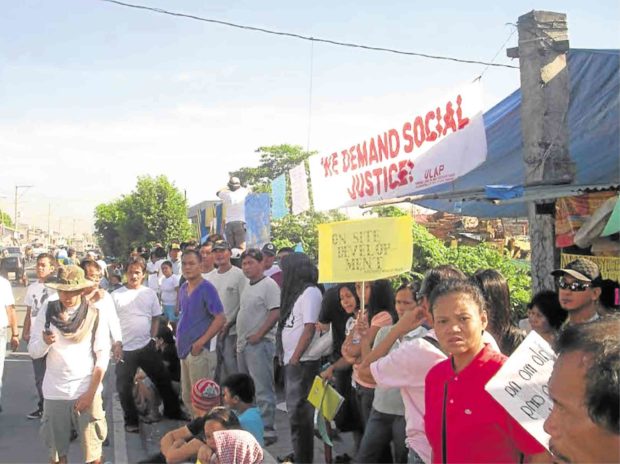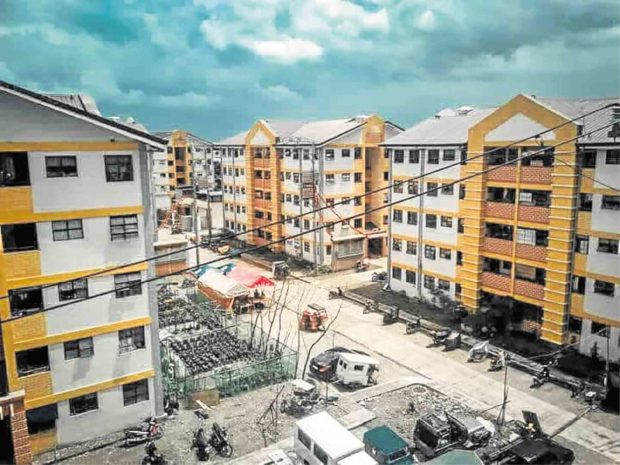
Conflicts and violence can be avoided through effective dialogue between the people and the authorities.
Housing is a community issue that many cities face both here and abroad. While we’ve seen innovative approaches to this persistent problem, sometimes the most effective solutions are the simple ones.
The People’s Plan is one such approach that relies on both the professional recommendations and community dialogue. As described by Kreeger Bonagua, a seasoned community organizer in urban poor communities, housing that is planned through this method is demand-driven instead of supply-driven.
Projects that are born through the People’s Plan engage their intended inhabitants in the planning process.
While construction is still carried out with permission from authorities, the opinions and capacity to pay of future residents are taken into consideration. Through this process, there is an assurance that the houses will be able to respond to the needs of the intended users. The houses are made to accommodate the people, and not the other way around.
Case study
The Manggahan Floodway Housing project is one of those that pioneered the People’s Plan approach in the Philippines. A project almost 10 years in the making, the development is now being constructed along the East Bank Road of Sta. Lucia, Pasig City.
The need for new housing arose when Typhoon Ondoy struck the floodway embankments in 2009, causing massive damage. The area was declared dangerous right after and the people who lived in the embankments were relocated off-site.
Due to job commitments and poor facilities, however, many of the relocated families flocked back to the Pasig embankment site. To seek in-city housing legally, the people formed the Alliance of People’s Organization along Manggahan Floodway (APOAMF).
At first, APOAMF met some friction with the government, who prohibited them from building on the embankment again due to safety and feasibility reasons. With some help from the NGOs TAO-Pilipinas and CO Multiversity, the group was able to convince the government that in-city socialized housing was possible.
Through close discussions and presentations, the government and the community group eventually agreed to compromise and provide a new resettlement site within the city.
Through research, APOAMF was able to identify and propose an alternative resettlement site in the same city that was far from the dreaded Floodway waters.
The group proposed numerous design plans for the new residences, but it was the government that officially developed the building design due to budget constraints and city requirements. The community and authorities were able to compromise and come up with a plan that benefits everyone.
This is just one example of socialized housing brought about by society’s joint efforts.
Benefits
For the development of homes geared towards low-income families, dialogues make in-city relocation or onsite redevelopment possible.
Often, the challenge in housing is providing a location that will still allow people to easily reach work and school.
Though our cities today are mostly crowded, you’ll be surprised to know that there are plots of land within the city that can actually be used to accommodate socialized housing. All it takes is coordination with the corresponding authorities.
In-city housing allows people to carry on with their lives because it allows them to access livelihood and basic facilities. If this is not possible, re-housing in nearby cities can still accommodate their needs as long as travel distance to their original location is reasonable.
Whatever the decision, proper communication ensures that the community’s specific needs are met while government rulings remain intact.
Strategies
Working through the People’s Plan involves several steps to realize the project.
The first step is unifying the community by encouraging them to develop a common vision. When an agreement among the settlers is reached, they can carry out the necessary research and proposals to show to the proper authorities. Presentations allow the people and authorities to start talking and developing solutions together.
Once discussions begin, different groups can now negotiate their needs through the proper channels.
Common goals and personal interests are identified through these joint dialogues. These meetings can also show people the things that they need to do on their part to realize their desired homes. When the different groups reach a compromise, all of them can work together to secure the initial financing and resources to make the projects possible.
Upon the construction and turnover of the project, continuous coordination and real estate management can help the community to thrive even through the years.
Opportunities
Participative planning between the government and communities makes sure that all voices are heard.
As long as there is a common goal to reach a compromise, joint efforts can pave the way to realize the goals of both parties. Through dialogues, mutual trust and respect are eventually developed to allow plans to be made without violence or conflicts.
Design through the People’s Plan is effective because all needs are taken into consideration in the planning process.
Limitations of the project and responsibilities of intended users are also made clear to those involved. Though there is no guarantee to the success of the endeavor, there is an attempt to accommodate everyone’s needs throughout its development.
Taking off from the successful development of the Manggahan Floodway project, there arises the hope that this method can also be duplicated across different cities in our country to finally solve housing.
(Sources: Aleksejs Bergmanis via pexels.com; Kreeger Bonagua of the Presidential Commission for the Urban Poor; Arlene Christy Lusterio of TAO-Pilipinas; Sherlynn Mae Lucas and Ivyrose Igup of CO-Multiversity; Rebeca Cantalejo; Catherine Hermo; and Community Presentations of the Manggahan Floodway Project)
The author is a licensed architect who studied abroad and currently works for DSFN Architects. As part of a school requirement, she has participated in the initial planning process of the Manggahan Floodway project. Seeing the fruit of this endeavor makes her realize that socialized housing is possible despite politics, personal interests and financial limitations.


